
Enchanting Lake Skadar: Montenegro's Hidden Gem
Discover Lake Skadar, Montenegro's largest lake, where stunning landscapes, diverse wildlife, and rich cultural heritage create an unforgettable travel experience.
Nestled between Montenegro and Albania, Lake Skadar is a stunning natural wonder that offers a perfect blend of serene beauty and rich cultural heritage. As the largest lake in Southern Europe, it features an expansive stretch of water surrounded by majestic mountains and lush wetlands, providing a haven for nature lovers and adventure seekers alike. One of the lake's most captivating aspects is its diverse ecosystem. Home to more than 270 species of birds, including the rare Dalmatian pelican, Lake Skadar is a paradise for bird watchers. The surrounding national park, with its dense forests and picturesque villages, invites visitors to explore its hiking trails and discover the local flora and fauna. For those interested in history and culture, Lake Skadar does not disappoint. The area is dotted with ancient monasteries, fortresses, and traditional fishing villages that provide a glimpse into the region's past. Boat tours on the lake offer the opportunity to visit these historical sites, while also enjoying the tranquil waters and scenic views. Lake Skadar is also renowned for its culinary delights. The region's cuisine, which heavily features fresh fish from the lake, is a treat for food enthusiasts. Local restaurants and family-run konoba (taverns) serve delicious dishes accompanied by locally produced wines, making for a memorable dining experience. Whether you seek relaxation, adventure, or a taste of local culture, Lake Skadar promises an unforgettable experience amidst Montenegro's breathtaking landscape.
Local tips in Lake Skadar
- Visit in spring or autumn for the best weather and fewer crowds.
- Hire a local guide for bird watching to maximize your experience.
- Take a boat tour to explore hidden monasteries and fortresses.
- Sample local fish dishes at the lakeside taverns for authentic cuisine.
- Bring binoculars and a camera to capture the stunning wildlife and scenery.
Enchanting Lake Skadar: Montenegro's Hidden Gem
Nestled between Montenegro and Albania, Lake Skadar is a stunning natural wonder that offers a perfect blend of serene beauty and rich cultural heritage. As the largest lake in Southern Europe, it features an expansive stretch of water surrounded by majestic mountains and lush wetlands, providing a haven for nature lovers and adventure seekers alike. One of the lake's most captivating aspects is its diverse ecosystem. Home to more than 270 species of birds, including the rare Dalmatian pelican, Lake Skadar is a paradise for bird watchers. The surrounding national park, with its dense forests and picturesque villages, invites visitors to explore its hiking trails and discover the local flora and fauna. For those interested in history and culture, Lake Skadar does not disappoint. The area is dotted with ancient monasteries, fortresses, and traditional fishing villages that provide a glimpse into the region's past. Boat tours on the lake offer the opportunity to visit these historical sites, while also enjoying the tranquil waters and scenic views. Lake Skadar is also renowned for its culinary delights. The region's cuisine, which heavily features fresh fish from the lake, is a treat for food enthusiasts. Local restaurants and family-run konoba (taverns) serve delicious dishes accompanied by locally produced wines, making for a memorable dining experience. Whether you seek relaxation, adventure, or a taste of local culture, Lake Skadar promises an unforgettable experience amidst Montenegro's breathtaking landscape.
When is the best time to go to Lake Skadar?
Iconic landmarks you can’t miss
Lovćen National Park
Experience the breathtaking beauty and cultural richness of Lovćen National Park, a true gem in Montenegro's natural landscape.

Rozafa Castle
Experience the allure of Rozafa Castle, a historic fortress in Albania offering stunning views and a glimpse into the region's rich cultural heritage.

Skadar Lake National Park
Explore the natural wonders and rich biodiversity of Skadar Lake National Park, a breathtaking destination in Montenegro, perfect for nature lovers and adventurers.
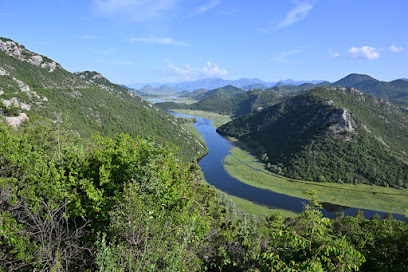
Vodopad Nijagara
Discover the enchanting Vodopad Nijagara, a stunning waterfall in Montenegro that offers breathtaking views and serene natural beauty.

Cetinje Monastery
Discover the peace and history of Cetinje Monastery, a stunning landmark in Montenegro that offers a serene escape and rich cultural insights.

Маузолеј Петра II Петровића Његоша
Explore the Petrović Mausoleum, a stunning historical landmark in Montenegro that reflects the legacy of the Petrović dynasty amidst serene landscapes.

Biogradska gora National Park
Discover the breathtaking landscapes and rich biodiversity of Biogradska Gora National Park, a must-visit destination in Montenegro for nature enthusiasts.

Lake Skadar National Park Visitors Centre
Explore the beauty and biodiversity of Lake Skadar National Park from the essential Visitors Centre, your gateway to adventure in Montenegro.

Pavlova Strana Viewpoint
Experience the stunning panoramic views of Skadar Lake at Pavlova Strana Viewpoint, a must-see destination in Montenegro for nature lovers and photographers.

Тврђава Бесац
Explore Besac Fortress in Virpazar, Montenegro, and enjoy stunning views of Skadar Lake while diving into the region's rich history.

Shkodra Lake
Discover the natural beauty and cultural richness of Shkodra Lake, a must-visit destination in the heart of the Balkans.

Murići beach
Discover Murići Beach, a tranquil nature preserve in Montenegro known for its stunning landscapes, crystal-clear waters, and serene atmosphere perfect for relaxation.

Tara Zipline
Experience the thrill of zip lining over the stunning landscapes of Montenegro at Tara Zipline, one of Europe's premier adventure attractions.

Nevidio Canyon
Explore Nevidio Canyon in Montenegro, a thrilling adventure destination with stunning landscapes and exhilarating outdoor activities for every adventurer.

Boat Milica
Experience the breathtaking beauty of Skadar Lake with Boat Milica's unforgettable guided boat tours in Virpazar, Montenegro.

Unmissable attractions to see
Pješačac
Discover the breathtaking beauty and culinary delights of Pješac, a serene beach pavilion and restaurant in the heart of Montenegro.

Ancient Doclea Ruins
Discover the Ancient Doclea Ruins in Podgorica, a remarkable archaeological site that unveils Montenegro's rich Roman heritage amidst serene landscapes.

Kayak rentals Ivan
Explore the tranquil waters of Vranjina with Kayak Rentals Ivan, where adventure meets breathtaking natural beauty in Montenegro.
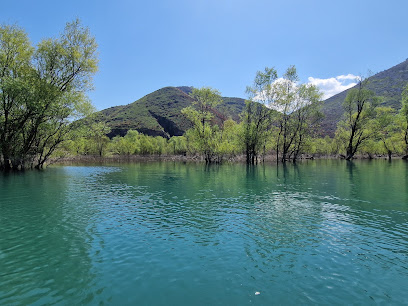
Reconciliation Tower
Experience the Reconciliation Tower in Albania: A profound symbol of hope, unity, and breathtaking views in a rich historical setting.

Mrkan Winery
Experience the Best of Montenegrin Winemaking at Mrkan Winery – A Hidden Gem for Wine Lovers in the Heart of Cetinje.
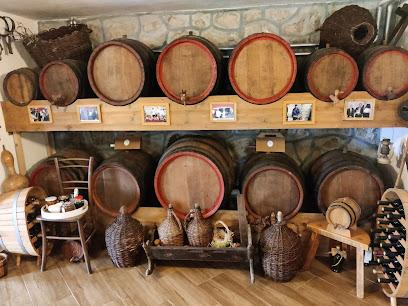
Njegoševa Rodna Kuća
Explore the rich cultural heritage of Montenegro at Njegoševa Rodna Kuća, the birthplace of the beloved poet and ruler Petar II Petrović Njegoš.
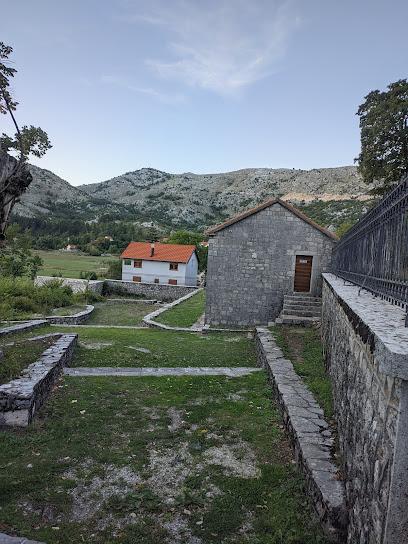
Gallery of Museum of Contemporary Art of Montenegro
Explore the vibrant world of modern artistic expressions at the Museum of Contemporary Art of Montenegro in Podgorica. A cultural gem for art lovers.

Аквадукти
Explore the majestic Akvadukti in Stari Bar, Montenegro – a stunning aqueduct that embodies rich history and breathtaking scenery.

Shkodër
Explore the historic charm and breathtaking landscapes of Shkodër, Albania's enchanting gem rich in culture and adventure.
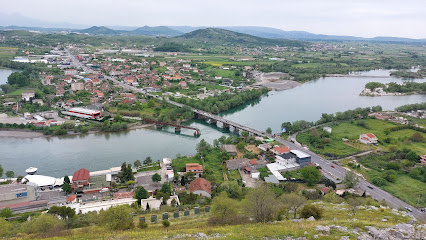
Yellow door
Explore the artistic heart of Shkodër at Yellow Door, where local culture and creativity come alive in a vibrant community setting.

Viewpoint Skadar
Discover the stunning vistas of Skadar Lake at Viewpoint Skadar, a tourist attraction that captures Montenegro's natural beauty and tranquility.

Скала Spila
Explore the beauty and history of Skala Spila, a stunning tourist attraction in Stari Bar, Montenegro, with breathtaking views and rich cultural heritage.
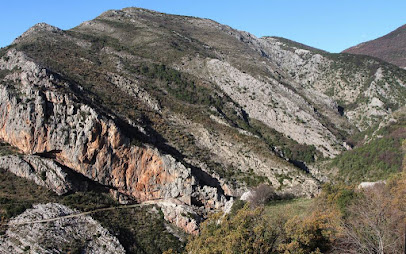
Wieża obronna
Discover the enchanting Wieža Obronna in Stari Bar, a historic fortress offering breathtaking views and a rich tapestry of Montenegro's past.

Stavidlo pri Kanone
Discover tranquility and natural beauty at Stavidlo pri Kanone in Shkodër, a must-visit tourist attraction for nature lovers and culture enthusiasts alike.

Qender Theth
Explore Qender Theth, Albania: A breathtaking alpine village offering stunning landscapes, rich culture, and thrilling outdoor adventures in the heart of nature.
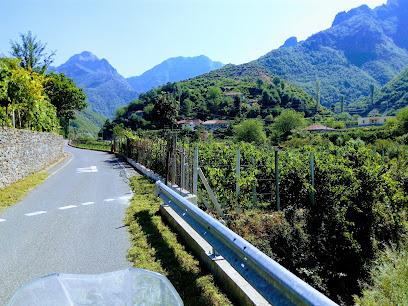
Essential places to dine
RESTAURANT PELIKAN
Experience exquisite Montenegrin cuisine at Restaurant Pelikan with stunning views over Skadar Lake - a culinary gem in Virpazar.

Konoba Bedem
Experience authentic Montenegrin cuisine at Konoba Bedem in Stari Bar - where tradition meets flavor.

Ресторан Језеро
Experience authentic Montenegrin cuisine with stunning views at Ресторан Језеро by Skadar Lake.

Skadar Lake Family Resort - Family restaurant-boat tours-rent room and boutique autocamp
Experience tranquility and adventure at Skadar Lake Family Resort – where nature meets comfort in stunning Montenegro.
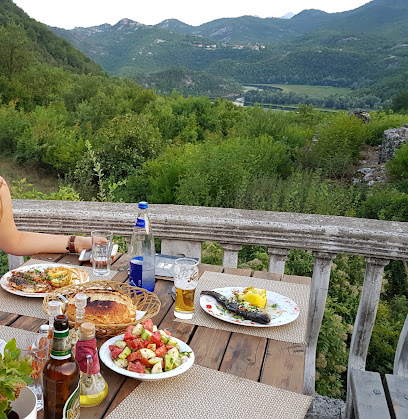
Boat restaurant Silistria
Experience authentic Montenegrin cuisine on water at Boat Restaurant Silistria in Virpazar, surrounded by breathtaking natural beauty.

Restoran Konoba Starčevo
Experience traditional Montenegrin flavors at Restoran Konoba Starčevo with stunning views over Skadar Lake.

Taverna Shkodrane
Experience authentic Albanian cuisine at Taverna Shkodrane with stunning lake views that will leave you enchanted.

The Sons Eatery
Experience authentic Mediterranean cuisine at The Sons Eatery in Bar - where every meal is crafted with love and fresh local ingredients.

Plavnica Eco Resort
Experience exquisite local cuisine at Plavnica Eco Resort amidst stunning views of Lake Skadar's breathtaking landscapes.
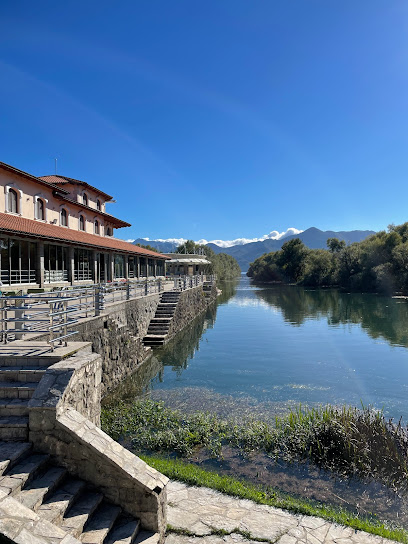
Konoba Demidžana
Experience authentic Montenegrin cuisine at Konoba Demidžana in Virpazar, where every dish tells a story and every bite delights.

Restoran Obala
Discover Restoran Obala: Where exquisite local cuisine meets breathtaking views of Shkodra Lake in Montenegro.

Bar Restaurant Buna Park
Discover exquisite dining with stunning lake views at Bar Restaurant Buna Park in Shkodër, where traditional Albanian cuisine meets serene ambiance.

Karučki krš
Savor authentic Montenegrin cuisine at Karučki Krš while enjoying breathtaking views and warm hospitality.

Konoba Ckla(Skje)
Discover authentic Montenegrin cuisine at Konoba Ckla with stunning lake views - a true culinary delight in Montenegro.

ANTIKA Restoran
Experience authentic Montenegrin cuisine at ANTIKA Restoran, where traditional flavors meet breathtaking views of Skadar Lake.

Markets, malls and hidden boutiques
Shopping Centre Kamelija
Discover Shopping Centre Kamelija in Kotor - a vibrant shopping mall with top brands, delicious dining, and fun for the whole family.

Lake Skadar National Park Visitors Centre
Discover the beauty and biodiversity of Lake Skadar National Park at the Visitors Centre, your gateway to nature's wonders in Montenegro.

Pavlova Strana Viewpoint
Discover the stunning vistas at Pavlova Strana Viewpoint in Šinđon, Montenegro – a hidden gem for nature lovers and photographers alike.
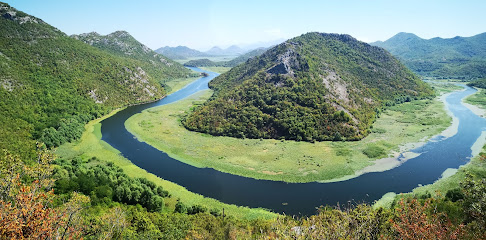
Kingfisher Boat & Kayak - Lake Skadar
Explore the breathtaking Lake Skadar with Kingfisher Boat & Kayak, offering unforgettable boat and kayak tours in Montenegro's stunning landscapes.
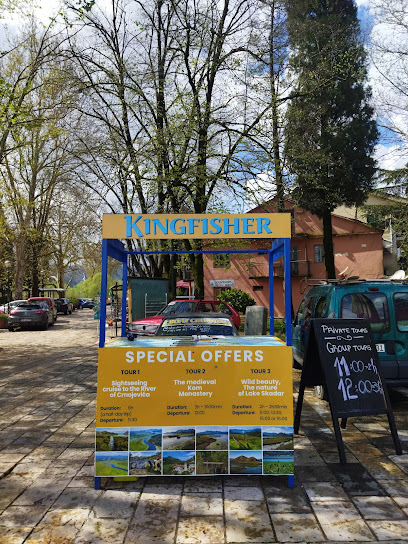
Murići beach
Experience the untouched beauty of Murići Beach, a tranquil nature preserve in Montenegro, where serenity meets stunning landscapes.

Eco Resort & Winery Cermeniza
Experience unparalleled tranquility and exquisite wines at Eco Resort & Winery Cermeniza, the perfect escape in Montenegro's breathtaking countryside.

Pješačac
Experience the serene beauty of Pješačac Beach Pavilion in Montenegro, where stunning views and delicious cuisine unite for an unforgettable retreat.

Vinarija Mašanović / Winery Masanovic
Explore Vinarija Mašanović, a delightful winery in Virpazar, Montenegro, and savor exquisite local wines amidst breathtaking landscapes.

Cats Of Kotor
Explore the whimsical Cats of Kotor souvenir store for unique, handmade gifts that capture the essence of Montenegro's feline charm.

Cakan Sport Bar Popovici
Experience the thrill of sports at Cakan Sport Bar in Montenegro, where local culture meets lively entertainment and delicious refreshments.

Trendy outlet
Unleash your inner fashionista at Trendy Outlet in Čeluga, Montenegro – the ultimate shopping destination for clothing and style.

ASHEL Market
Experience the vibrant flavors of Albania at ASHEL Market in Koplik, your one-stop supermarket for local and international products.

Nomad Life Home
Explore unique gifts and home decor at Nomad Life Home in Podgorica, where local artistry meets thoughtful design.

Donum Artes
Explore the charm of Montenegro at Donum Artes, where local craftsmanship meets unique gift shopping in the heart of Bar.

Kotor Souvenir
Explore Kotor Souvenir for unique handcrafted treasures that embody the beauty and culture of Montenegro, perfect for memorable gifts.

Essential bars & hidden hideouts
RESTAURANT PELIKAN
Experience the Best of Montenegrin Cuisine at Restaurant Pelikan in Virpazar - A Culinary Jewel Overlooking Lake Skadar.

Boat restaurant Silistria
Delight in Montenegrin cuisine at Boat Restaurant Silistria, a unique dining experience on the serene waters of Lake Skadar.

Pješačac
Experience the best of Montenegrin cuisine at Pješačac, a beachside restaurant in Virpazar offering fresh seafood and stunning coastal views.

Il Tramonto Restaurant
Discover the culinary delights of Il Tramonto Restaurant in Shkodër, where traditional Albanian flavors meet stunning views for an unforgettable dining experience.
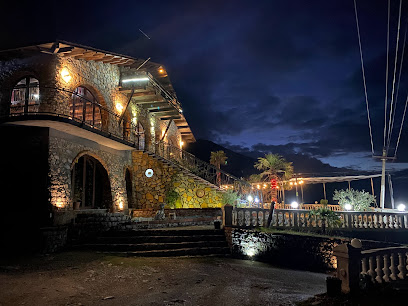
Bar Fontana
Discover the charm of Bar Fontana in Shkodër, a cozy bar offering a perfect blend of local drinks and vibrant atmosphere for an unforgettable experience.

Bam Bar Lounge
Discover the vibrant nightlife and refreshing cocktails at Bam Bar Lounge, the perfect spot for relaxation and socializing in Shkodër, Albania.

Bar Restorant Lepeja
Experience the essence of traditional Albanian cuisine in a cozy lounge setting at Bar Restorant Lepeja in Omarë Shkodër.

Плави 1
Discover the charm of Плави 1 in Virpazar – a cozy bar offering local wines and a taste of Montenegrin hospitality in a picturesque setting.

Lobby Bar
Experience the inviting charm of the Lobby Bar in Shkodër, offering refreshing drinks and a relaxing atmosphere amidst stunning views.

Bar Caffe Pali
Experience the warm Albanian hospitality at Bar Caffe Pali in Shkodër, where local flavors and a cozy atmosphere await every visitor.

Bar Fiesta
Experience the vibrant flavors of Albania at Bar Fiesta, your go-to grill bar in Shkodër for delightful meals and a warm atmosphere.

Bar Kafe Blu Relax
Experience the vibrant atmosphere of Bar Kafe Blu Relax in Shkodër, where refreshing drinks and local culture come together for a memorable experience.

Bar Braian
Experience the vibrant atmosphere of Bar Braian, a cozy Shkodër bar where locals and tourists enjoy affordable drinks and live music.

Bar THEWILL
Discover the charm of local culture at Bar THEWILL in Koplik, where great drinks and a welcoming atmosphere await.

Сплав Република
Experience the vibrant atmosphere and stunning views at Сплав Република, the perfect bar in Vranjina, Montenegro for relaxation and socializing.

Local Phrases about Lake Skadar
-
- HelloZdravo
[ZDRAH-voh] - GoodbyeDoviđenja
[doh-VEE-nyah] - YesDa
[dah] - NoNe
[neh] - Please/You're welcomeMolim vas
[MOH-leem vahs] - Thank youHvala
[HVAH-lah] - Excuse me/SorryIzvinite
[EEZ-vee-nee-teh] - How are you?Kako si?
[KAH-koh see] - Fine. And you?Dobro. A ti?
[DOH-broh. ah tee] - Do you speak English?Govorite li engleski?
[GOH-voh-ree-teh lee ENG-lehs-kee] - I don't understandNe razumijem
[neh rah-ZOO-mee-yem]
- HelloZdravo
-
- I'd like to see the menu, pleaseMolio bih meni, molim
[MOH-lee-oh bee meh-nee, MOH-leem] - I don't eat meatNe jedem meso
[neh YEH-dehm MEH-soh] - Cheers!Živjeli!
[ZHEEV-yeh-lee] - I would like to pay, pleaseŽelim platiti, molim
[ZHEH-leem PLAH-tee-tee, MOH-leem]
- I'd like to see the menu, pleaseMolio bih meni, molim
-
- Help!Pomoć!
[POH-mohtch] - Go away!Idi odavde!
[EE-dee oh-DAHV-deh] - Call the Police!Zovite policiju!
[ZOH-vee-teh poh-LEE-tsee-yoo] - Call a doctor!Zovite doktora!
[ZOH-vee-teh DOHK-toh-rah] - I'm lostIzgubio sam se
[EEZ-GOO-byoh sahm sehh] - I'm illBolestan sam
[BOH-leh-stahn sahm]
- Help!Pomoć!
-
- I'd like to buy...Želim kupiti...
[ZHEH-leem koo-PEE-tee] - I'm just lookingSamo gledam
[SAH-moh GLEH-dahm] - How much is it?Koliko košta?
[KOH-lee-koh KOSH-tah] - That's too expensiveTo je previše skupo
[toh yeh PREH-vee-sheh SKOO-poh] - Can you lower the price?Možete li spustiti cijenu?
[MOH-zheh-teh lee SPOO-stee-tee TSEE-yeh-noo]
- I'd like to buy...Želim kupiti...
-
- What time is it?Koliko je sati?
[KOH-lee-koh yeh SAH-tee] - It's one o'clockJedan je sat
[YEH-dahn yeh saht] - Half past (10)Pola (10)
[POH-lah (10)] - MorningJutro
[YOO-troh] - AfternoonPopodne
[POH-pohd-neh] - EveningVeče
[VEH-cheh] - YesterdayJuče
[YOO-cheh] - TodayDanas
[DAH-nahs] - TomorrowSutra
[SOO-trah] - 1Jedan
[YEH-dahn] - 2Dva
[dvah] - 3Tri
[tree] - 4Četiri
[CHEH-tee-ree] - 5Pet
[peht] - 6Šest
[shest] - 7Sedam
[SEH-dahm] - 8Osam
[OH-sahm] - 9Devet
[DEH-veht] - 10Deset
[DEH-seht]
- What time is it?Koliko je sati?
-
- Where's a/the...?Gdje je...
[GD-yeh yeh] - What's the address?Koja je adresa?
[KOH-yah yeh ah-DEH-sah] - Can you show me (on the map)?Možete li mi pokazati (na karti)?
[MOH-zheh-teh lee mee poh-KAH-zah-tee (nah KAR-tee)] - When's the next (bus)?Kada je sljedeći (autobus)?
[KAH-dah yeh SL-yeh-deh-chee (OW-toh-boos)] - A ticket (to ....)Jednu kartu (za ....)
[YEH-dnoo KAHR-too (zah)]
- Where's a/the...?Gdje je...
History of Lake Skadar
-
Lake Skadar has been a vital center for human settlement since ancient times. The area surrounding the lake was inhabited by Illyrian tribes, who left behind numerous archaeological remains, including fortresses and burial mounds. The strategic location of the lake made it a crucial point of defense and trade for these early settlers.
-
During the Roman period, Lake Skadar became an important part of the Roman province of Dalmatia. The Romans built the Via Egnatia, a major road that connected the Adriatic Sea to Byzantium (modern-day Istanbul), passing near the lake. Roman relics, such as villas, bridges, and fortifications, can still be found in the region, highlighting the lake's significance during this era.
-
In the medieval period, the region around Lake Skadar was known as Zeta, a principality that played a significant role in the history of Montenegro. The lake's proximity to the Adriatic Sea made it a contested territory among various regional powers, including the Serbian, Byzantine, and Venetian states. Numerous medieval monasteries and churches, such as the Monastery of St. Nicholas on Vranjina Island, reflect the region's rich cultural and religious heritage.
-
Lake Skadar fell under Ottoman control in the late 15th century, becoming part of the Sanjak of Scutari. The Ottomans recognized the strategic importance of the lake and established fortifications along its shores. However, the local population frequently rebelled against Ottoman rule, leading to numerous uprisings and battles. The remnants of Ottoman architecture, such as bridges and fortresses, still dot the landscape, serving as a testament to this turbulent period.
-
One of the most significant historical events at Lake Skadar was the Battle of Vranjina in 1858. This battle saw Montenegrin forces, led by Grand Duke Mirko Petrović-Njegoš, decisively defeat the Ottoman army. The victory was a turning point in Montenegro's struggle for independence, bolstering national pride and leading to further territorial gains in the region.
-
Following World War I, Lake Skadar became part of the newly-formed Kingdom of Yugoslavia. During the Yugoslav era, the lake and its surrounding areas were developed for tourism and agriculture. The establishment of Lake Skadar National Park in 1983 marked a significant effort to preserve the lake's unique ecosystem and cultural heritage. Today, the park is a vital conservation area, attracting visitors from around the world.
-
In contemporary times, Lake Skadar remains a symbol of Montenegro's natural beauty and historical depth. The lake is a UNESCO-designated Ramsar Wetland of International Importance, renowned for its biodiversity and cultural landmarks. The blend of historical sites, from ancient fortresses to Ottoman bridges, along with its stunning natural landscapes, makes Lake Skadar a must-visit destination for history enthusiasts and nature lovers alike.
Lake Skadar Essentials
-
Lake Skadar is located on the border of Montenegro and Albania. The nearest international airport is Podgorica Airport, approximately 20 kilometers from the lake. From Podgorica, you can take a taxi or rent a car to reach the lake. Alternatively, you can use the train service from Podgorica to Bar, getting off at the Virpazar station, which is close to Lake Skadar.
-
Transportation around Lake Skadar includes options like taxis, rental cars, and bicycles. Virpazar is a central hub for boat tours on the lake. Public buses also connect Virpazar with Podgorica and Bar. Renting a car can be particularly convenient for exploring the more remote areas of the lake and its surroundings.
-
The official currency in Montenegro is the Euro (EUR). Credit cards are accepted in most hotels, restaurants, and shops around Lake Skadar, but it is advisable to carry some cash, especially for smaller establishments and local markets. ATMs are available in larger towns like Virpazar and Podgorica.
-
Lake Skadar is generally a safe destination for tourists. However, as with any travel location, standard precautions should be taken. Avoid venturing alone into isolated areas, especially at night, and keep an eye on your belongings in busy locations. There are no specific high-crime areas targeting tourists, but always stay vigilant and aware of your surroundings.
-
In case of an emergency, dial 112 for immediate assistance, which is the general emergency number in Montenegro. The nearest medical facilities can be found in Podgorica, and there are also smaller clinics in towns around the lake. It is recommended to have travel insurance that covers medical emergencies. Pharmacies are available in larger towns for minor health issues.
-
Fashion: Do dress modestly, especially when visiting religious sites. Avoid overly revealing clothing. Religion: Do respect local customs and traditions, particularly in religious sites. Remove hats and cover shoulders when entering churches. Public Transport: Do be respectful and offer your seat to elderly passengers. Don't eat or drink on public transport. Greetings: Do greet people with a friendly 'Dobar dan' (Good day). A handshake is common, especially in formal settings. Eating & Drinking: Do try local specialties like grilled fish and Montenegrin wine. Don't refuse hospitality, as it is considered impolite.
-
To experience Lake Skadar like a local, visit the local markets where you can buy fresh produce and artisanal goods. Engage with locals in Virpazar; they are often friendly and willing to share stories about the lake's history and culture. Don't miss a boat tour of the lake, which offers stunning views and opportunities to see local wildlife. For a unique experience, visit the village of Rijeka Crnojevića and take a walk along its picturesque riverside.
Trending Landmarks in Lake Skadar
-
Lovćen National Park
-
Rozafa Castle
-
Skadar Lake National Park
-
Vodopad Nijagara
-
Cetinje Monastery
-
Маузолеј Петра II Петровића Његоша
-
Biogradska gora National Park
-
Lake Skadar National Park Visitors Centre
-
Pavlova Strana Viewpoint
-
Тврђава Бесац
-
Shkodra Lake
-
Murići beach
-
Tara Zipline
-
Nevidio Canyon
-
Boat Milica
Nearby Cities to Lake Skadar
-
Things To Do in Podgorica
-
Things To Do in Ulcinj
-
Things To Do in Cetinje
-
Things To Do in Budva
-
Things To Do in Kotor
-
Things To Do in Lezhë
-
Things To Do in Tivat
-
Things To Do in Perast
-
Things To Do in Bajram Curri
-
Things To Do in Herceg Novi
-
Things To Do in Nikšić
-
Things To Do in Krujë
-
Things To Do in Gjakova
-
Things To Do in Durres
-
Things To Do in Trebinje











